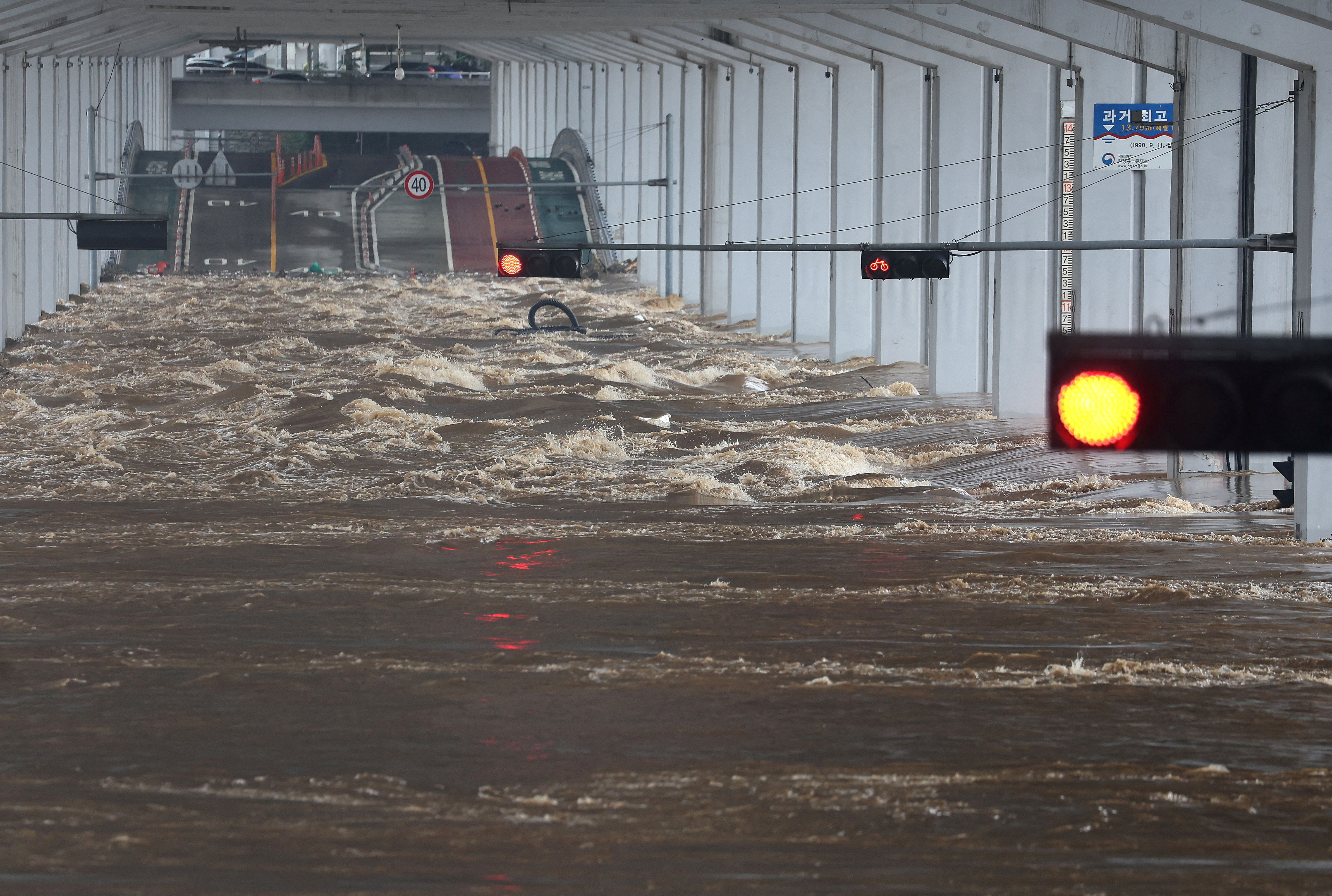
At least nine people have died and seven were missing in and around the South Korean capital, Seoul, after the city was lashed by the heaviest rains in more than 100 years.
More rain was forecast for Wednesday, but less than the downpours on Monday and Tuesday that submerged some streets and buildings, trapping people in flooded apartments and stranding cars.
The Central Disaster and Safety Countermeasures Headquarters said at least five people had died in Seoul as of Wednesday morning, as well as three in neighbouring Gyeonggi province and one in Gangwon province.
Seven are missing, while at least 17 people have been injured.
“The clean-up operation is continuing across Seoul, and also in the surrounding province,” Al Jazeera’s Rob McBride said from the capital. “After these unprecedented rains, streets, roads turned into rivers, vehicles were swept away and sadly, lives were lost. Some people were caught up in their apartments by rapidly rising floodwaters, other people swept away in the torrents.”


Reporting from the swollen Han river, which runs through Seoul, McBride said areas along either side of the waterway were “still submerged”, with many roads closed off.
The three-day downpours have inundated a total of 2,676 houses and buildings, most of them in the capital, and led to the temporary suspension of services on the railway and underground metro. Most highways and metro lines had been cleared by Wednesday.
“What has made the situation worse for South Koreans is that the North Koreans are suspected to have been releasing water into the shared rivers up near the border to relieve the pressure on their dams and rivers,” said McBride.
The North typically informs the South about such moves, but at the moment, the two countries are not talking amid differences over Pyongyang’s missile and nuclear weapons programme, he added.
According to the Korea Meteorological Administration, the accumulated rainfall in Seoul since midnight on Monday stood at 525mm as of 7am on Wednesday (22:00 GMT on Tuesday). In neighbouring Yangpyeong county, total rainfall hit 532.5mm.
Monday saw the heaviest rainfall, with the KMA recording an accumulated daily precipitation of 381.5mm, far higher than the official record of 354.7mm registered in August 1920 and the highest since the country started its modern weather recording system in 1907.
President Yoon Suk-yeol, who paid a visit to a semi-basement apartment in Seoul where three people were killed in a flash flood, said he was praying for the victims and on Wednesday ordered officials to ensure the most vulnerable were protected.
“It’s certainly true that it is abnormal weather, but we can no longer call such abnormal weather abnormal,” Yoon said, adding that the downpours were the heaviest since records began 115 years ago.
“We could see new record levels at any time. This shows that we can no longer respond based on past cases. We must respond with worse-than-expected scenarios in mind.”
Seoul’s Jamsu Bridge and the riverside park along Han River still submerged after torrential rains. Parts of highways still suspended. pic.twitter.com/2XjSvDCpWj
— Musun Kim (@MusunKIM) August 10, 2022
The KMA said it expects rain to continue in most parts of the country, with especially heavier rain in south-central Chungcheong province. The agency predicted that rainfall would gradually subside in many parts of the greater Seoul area and Gangwon province.
Al Jazeera’s McBride said the record-breaking rains were forcing South Korean authorities to rethink how they respond to weather events.
“For example, Seoul’s Gangnam district, south of the river, is prone to flooding. The authorities there had put in place ahead of these summer floods, special drainage to deal with the excess amount of water and they were very confident of being able to deal with these floods, able to handle up to 80mm of water per hour. Now that is an awful lot of water, clearly that is still not enough,” he said.
“Cities like Seoul, like cities elsewhere, having to work out how to deal with a changing climate.”







